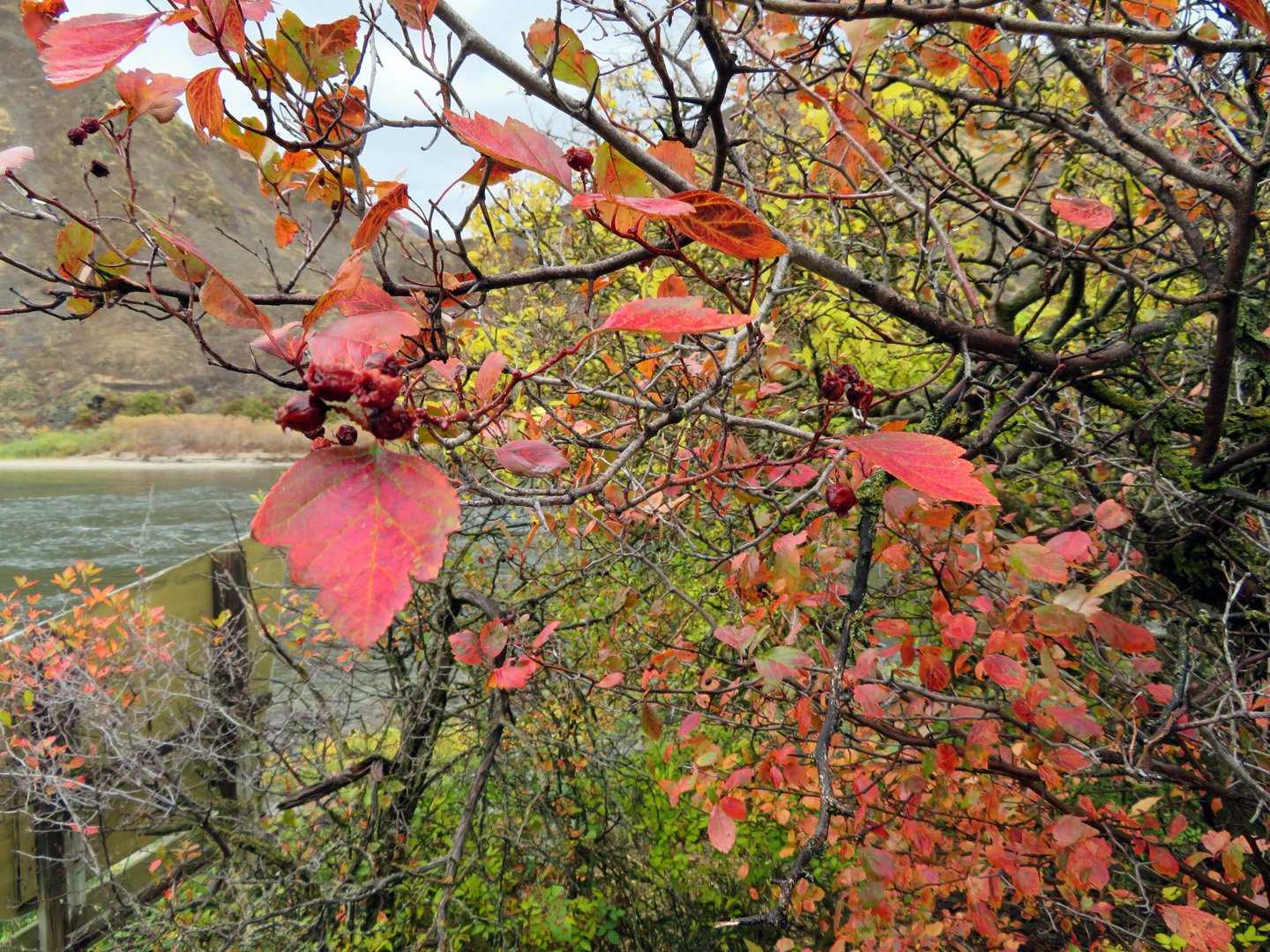On the first day of our journey we are at Clarkston, Washington, on the Snake River. Right after breakfast we set off on jet boats for an exciting journey up the Snake River and into Hells Canyon. Rugged and remote, Hells Canyon is the deepest river-cut canyon in North America. Our first stop is at Asotin (Place of Eels). Here we marveled at a beautiful outcrop of complex columnar basalt where perfectly formed columns rise above the river. Soon we were on the free-flowing Snake River. High cliffs formed by layer after layer of basaltic lava flows rose high above us. As we proceeded upstream on this cloudy morning, fall colors brightened the landscape as mulberry trees glowed golden and sumac smoldered crimson on the rocky slopes.
We passed the mouth of the Grand Ronde River, leaving the basalt flows and officially entering Hells Canyon and exotic terranes; exotic terranes are distinct pieces of land that have been added to the edge of the continent by tectonic processes. Now the rocky cliffs on either side grew steeper and even more rugged. Patches of blue appeared in the sky; then welcome sunshine flooded the canyon.
At Cache Creek in Hells Canyon National Recreational Area, we stopped for refreshments. Here is a small museum and in the yard is an orchard of apple, fig, plum and walnut trees—a green oasis among the usually parched hills. There is ample evidence that Wild Turkeys spend time here. Black bears come into the yard to eat walnuts, crunching the entire nut and spitting out the shells. We discovered deer tracks in the sand below the boat ramp.
On we went upriver, safely negotiating frequent rapids in the powerful jet boats. We kept and eye out for wildlife. We spotted a small group of Rocky Mountain bighorn sheep—some ewes and two rams. It is rutting season and the rams, sporting heavy curved horns, have come down from high above to where the ewes stay nearer the river. We turn around at the mouth of the Salmon River, the legendary “River of No Return”. Grace, our geologist, explained how the Salmon River is the source of the pale, sandy beaches along the Snake River. Tuning back downriver we saw more bighorn sheep, these on a rocky beach.
Garden Creek Ranch, the beautiful spot where we stop for lunch, was once a working ranch and is now owned by the Nature Conservancy. Here we enjoy a hearty lunch, seated indoors and warmed by a wood stove or outdoors on a deck from which we have beautiful views up and down the river. Mule Deer rest and browse in the apple orchard while Wild Turkeys forage on the grounds and sometimes fly up into the trees—a surprise to some of us. A covey of California quail flew into some bushes, but ventured out when no one seemed near.
Our last jet boat stop is at Buffalo Eddy where our guides point out an intriguing petroglyph. The origin and meaning of this mysterious artwork, made thousands of years ago, is still poorly understood. Back onboard Bob, our historian, gives a talk on the Nez Perce Indians—how they were crucial to the success of the Lewis & Clark expedition and their subsequent unjust treatment by the government during settling of the west. This was followed by a visit to the Nez Perce National Historic Park.
The evening activities closed with a film, Ice Age Floods: Catastrophic Transformation of the West, showing the power of the greatest floods known on Earth and how they shaped the area through which we will be sailing.







